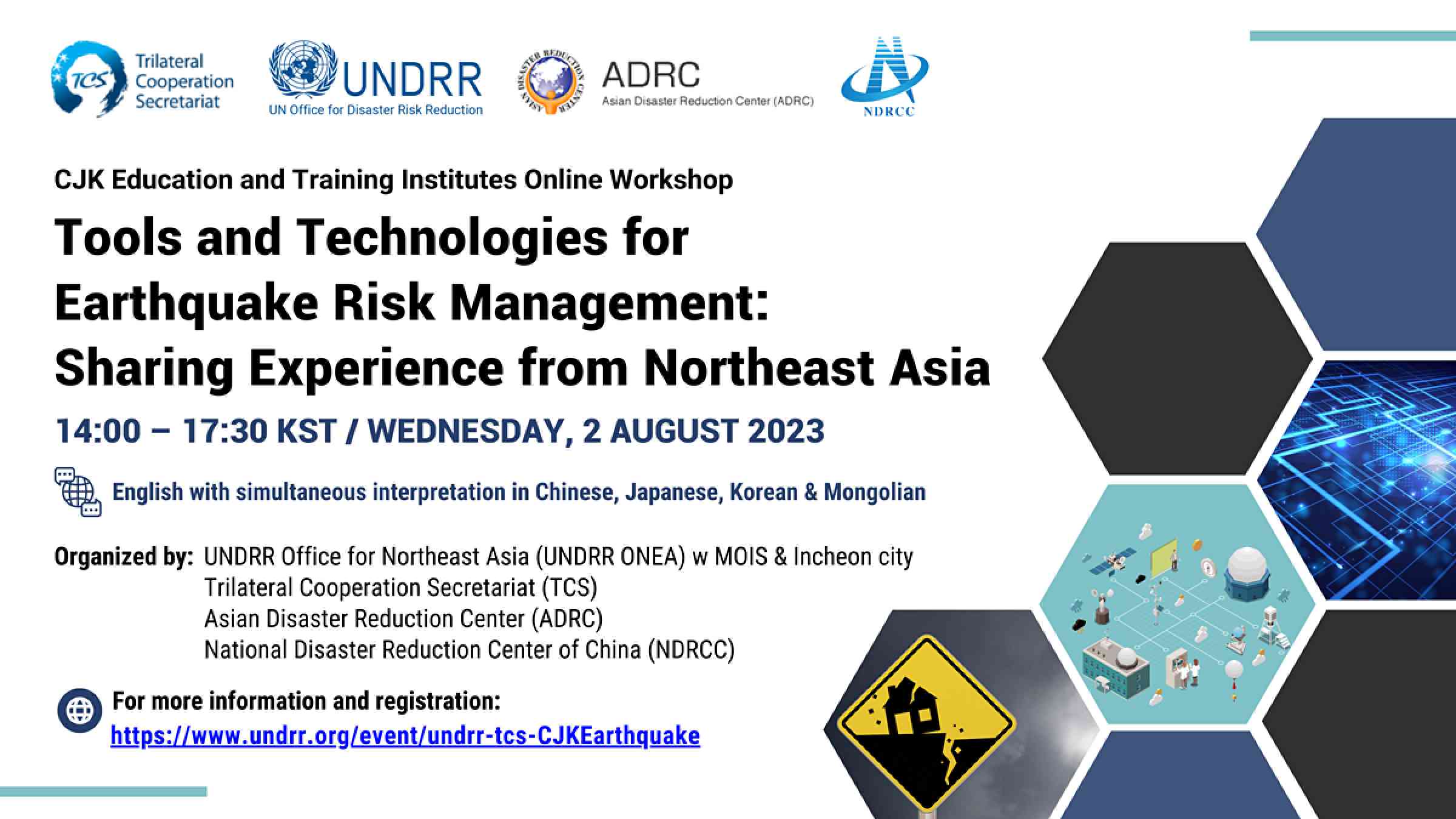[UNDRR, TCS] CJK Education and Training Institutes Online Workshop: Tools and Technologies for Earthquake Risk Management: Sharing Experience from Northeast Asia

Recording
Download Publication
Background
Earthquake risk and disaster risk reduction in Northeast Asia and Asia Pacific
Asia Pacific is the world’s most seismically active region, located along the Pacific Ring of Fire. Over two thirds of earthquakes which occurred in 2022 took place in the region, affecting over 3.6 million people across Northeast, Southeast and Southern Asia. In Northeast Asia alone, economic losses from earthquakes exceeded USD 403 billion over the last 20 years, with over 60 million people affected. As the devastating earthquake which hit Türkiye and Syria in February 2023 tragically illustrates, earthquakes remain among the deadliest natural hazards and result in significant economic loss and major damage to infrastructure, livelihoods and health. It is therefore key for countries located in earthquake-prone regions to improve their understanding of risk and of solutions and to invest in disaster risk reduction measures, including infrastructure and technology-based tools for resilience in the context of seismic risk.
Northeast Asia Experience and Trilateral Cooperation on Disaster Management
Given advanced experience in earthquake risk reduction in Northeast Asian countries, the webinar aims to share the expertise and examples of effective practices from China, Japan and the Republic of Korea (ROK), including through application of technology, infrastructure resilience measures and sustainable and risk-informed recovery and build-back-better approaches.
The webinar is organized as part of the trilateral cooperation on disaster management and disaster risk reduction, building on the outcomes of the 5th Trilateral Ministerial Meeting on Disaster Management in 2017, the 2018 Trilateral Working-Level Consultation Meeting on Disaster Management among the relevant ministries from China, Japan and the ROK, and the 2019 Meeting of the designated Education and Training Institutes on Disaster Management of the three countries which defined a series of joint activities between the three institutes to support experience sharing for capacity development on disaster risk reduction among the three countries as well as to provide training opportunities for developing countries.
Session objectives
This session aims to:
a) Increase the understanding of existing tools, technologies and effective practices for risk reduction among countries prone to earthquakes, in relation to such areas as risk assessment, early warning, building and infrastructure resilience measures and sustainable recovery; b) Share the experience of Northeast Asia countries in earthquake risk reduction with other countries exposed to seismic risks; c) Promote collaboration for capacity development for earthquake risk reduction between Northeast Asia and other countries/regions.
Expected Outcomes
- Participants learn about available tools and technologies for earthquake risk reduction;
- Opportunities for collaboration for capacity development on earthquake prevention between Northeast Asia and other countries/regions discussed.
Targeted Audience
Government officials from China, Japan and the ROK, Mongolia and other countries in Asia prone to earthquakes.
Language
Chinese, Japanese, Korean, Mongolian and English, with simultaneous interpretation
Organizers
- UN Office for Disaster Risk Reduction (UNDRR) Global Education and Training Institute (GETI) in collaboration with Incheon Metropolitan City and the Ministry of the Interior and Safety (MOIS) of the Republic of Korea
- Trilateral Cooperation Secretariat (TCS)
- Asian Disaster Reduction Center (ADRC)
- National Disaster Reduction Center of China (NDRCC)